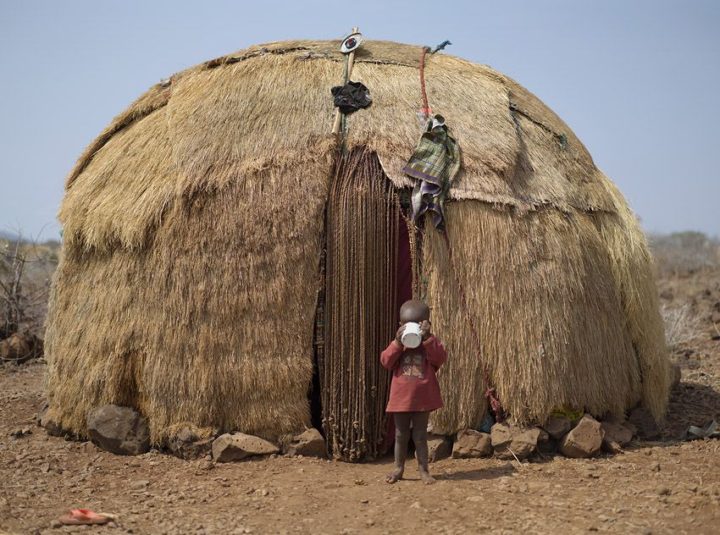
Image credit: Chris Jordan
Pastoralism can be defined as animal-husbandry, a branch of agriculture that focuses on the care and grazing of livestock in rangeland areas. The Borana are one of many nomadic pastoralist communities which follow defined routes to reduce risks of overgrazing. In Kenya, this community inhabits Isiolo and Marsabit counties.
In past times, Borana homesteads – referred to as Manyattas – comprised of 8 to 9 homes that housed up to 40 people. Each Manyatta was headed by a titular leader. The Manyatta had three types of houses, the family houses: ‘Gela’, the ceremonial houses: ‘Galo’, and the houses for newlyweds: ‘Gela”. Of the three, the Gela were the largest. All three houses took on a semicircular shape with walls made of wood, and roofs made of animal skin.
Owing to their nomadic lifestyle, the Borana homes were structured to be portable, easily erected and dismantled when the time to migrate came. The architects responsible for these homes were the Borana women who ensured, according to community customs, that each wife had her own home. The husband slept in the first wife’s home.
When it was time to leave, the houses were dismantled and placed upon camels’ backs and from there the journey to a new settlement commenced.






